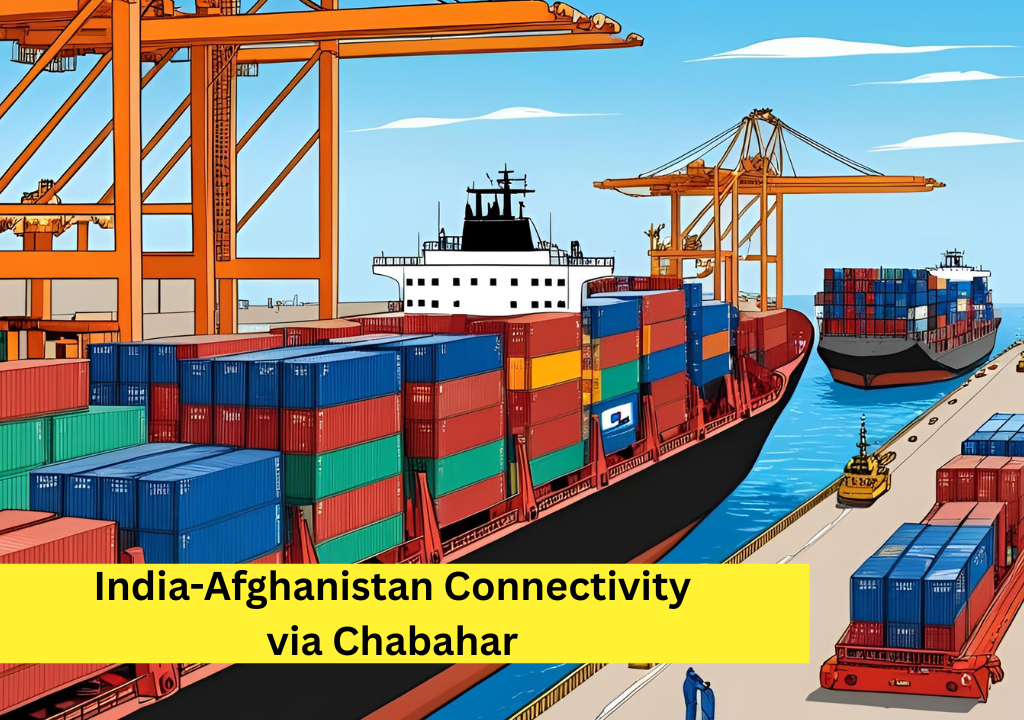With strained ties between the Taliban and Pakistan, a new chapter is unfolding in India-Afghanistan connectivity via Chabahar. India is strengthening its diplomatic and trade ties with Kabul through Iran’s Chabahar port, offering an alternative to Pakistani routes and reducing Islamabad’s long-held leverage over Afghanistan.
This strategic realignment, anchored in the Chabahar port and the International North-South Transport Corridor (INSTC), signals a shift toward broader regional integration—where India, Iran, and Afghanistan emerge as principal partners in a new connectivity axis.
Taliban’s Shift Away from Pakistan
Since the Taliban’s return to power in 2021, its relations with Pakistan have become increasingly strained. These tensions have pushed Afghanistan to explore new connectivity options—with a growing tilt toward India and Iran. Taliban officials have recently shown interest in greater participation in the Chabahar port project, suggesting a desire to reduce dependence on Pakistani ports such as Gwadar and Karachi.
Multiple sources indicate that Afghan delegations have visited Iran to discuss logistics and infrastructure cooperation, especially concerning Chabahar’s strategic trade routes.
India’s Diplomatic Engagement with the Taliban
In a major diplomatic breakthrough, External Affairs Minister S. Jaishankar recently held a phone conversation with Afghanistan’s Foreign Minister Mawlawi Amir Khan Muttaqi—the first such high-level contact between India and the Taliban in over two decades.
This comes after months of behind-the-scenes talks, including a private meeting in Dubai between Foreign Secretary Vikram Misri and Muttaqi. Following the April 22 Pahalgam terror attack, India also dispatched a delegation to Kabul, including MEA Joint Secretary JP Singh, to reinforce bilateral dialogue. These engagements eventually led to India re-establishing its diplomatic presence in Kabul.
Chabahar Port: Gateway to Central Asia
Located in southeastern Iran, the Chabahar Port offers India a direct trade route to Afghanistan and Central Asia, bypassing Pakistan entirely. It serves as a strategic counterpoint to China’s Belt and Road Initiative (BRI) and the China-Pakistan Economic Corridor (CPEC).
India’s presence at Shahid Beheshti Terminal, part of Chabahar’s infrastructure, has already led to a 43% increase in cargo traffic and a 34% rise in container throughput in FY 2023–24. In May 2024, India signed a 10-year agreement to continue development at the port, with over ₹400 crore allocated since FY 2016–17.
INSTC: The Larger Connectivity Network
Iran is actively promoting Afghanistan’s inclusion in the International North-South Transport Corridor (INSTC), a 7,200 km transport network connecting India, Iran, Russia, Central Asia, and Europe.
During recent talks between India’s NSA Ajit Doval and Iranian officials, both sides emphasized the importance of integrating Afghanistan into the INSTC framework. For India, this connectivity initiative strengthens its position as a regional trade facilitator and counters China’s strategic dominance in South and Central Asia.
Afghanistan’s participation would significantly enhance the corridor’s utility while providing Kabul with multi-directional access to regional markets.
China’s Calculated Engagement with Kabul
While India and Iran deepen ties with Afghanistan through infrastructure and connectivity, China is also keeping close tabs. In a recent visit to Beijing, Afghanistan’s Foreign Minister Muttaqi met with Chinese Foreign Minister Wang Yi and Pakistan’s Ishaq Dar, signaling continued efforts at trilateral coordination under the “Afghanistan-China-Pakistan” dialogue format.
Despite Beijing’s substantial investments in Afghanistan’s mineral resources and Pakistan’s CPEC, the Taliban’s openness to India’s proposals via Chabahar indicates a balancing strategy—leveraging multiple regional powers without overcommitting to any single one.
India-Afghanistan-Iran: A Strategic Triad?
As India-Afghanistan connectivity via Chabahar gains momentum, Pakistan’s traditional influence in Afghanistan appears to be weakening. With Afghanistan’s increasing interest in diversified trade partnerships and Iran’s proactive role, the India-Afghanistan-Iran strategic triad may evolve into a powerful regional alternative to China-led initiatives.
This shift also reflects Afghanistan’s ambition to assert its independence and integrate more fully into regional economic frameworks—aligning with India’s strategic objective of creating a reliable transit corridor that bypasses geopolitical chokepoints.
Conclusion
The emergence of India-Afghanistan connectivity via Chabahar marks a turning point in South Asian geopolitics. As Afghanistan distances itself from Pakistan and warms to Indian-led infrastructure and trade initiatives, Chabahar becomes a linchpin for regional cooperation and economic resilience.
For India, this not only enhances its strategic footprint in Central Asia but also allows it to offer Kabul a viable alternative to China and Pakistan. If this trend continues, Chabahar may soon become the gateway of choice for Afghanistan’s regional ambitions, transforming the balance of power in South and Central Asia.

